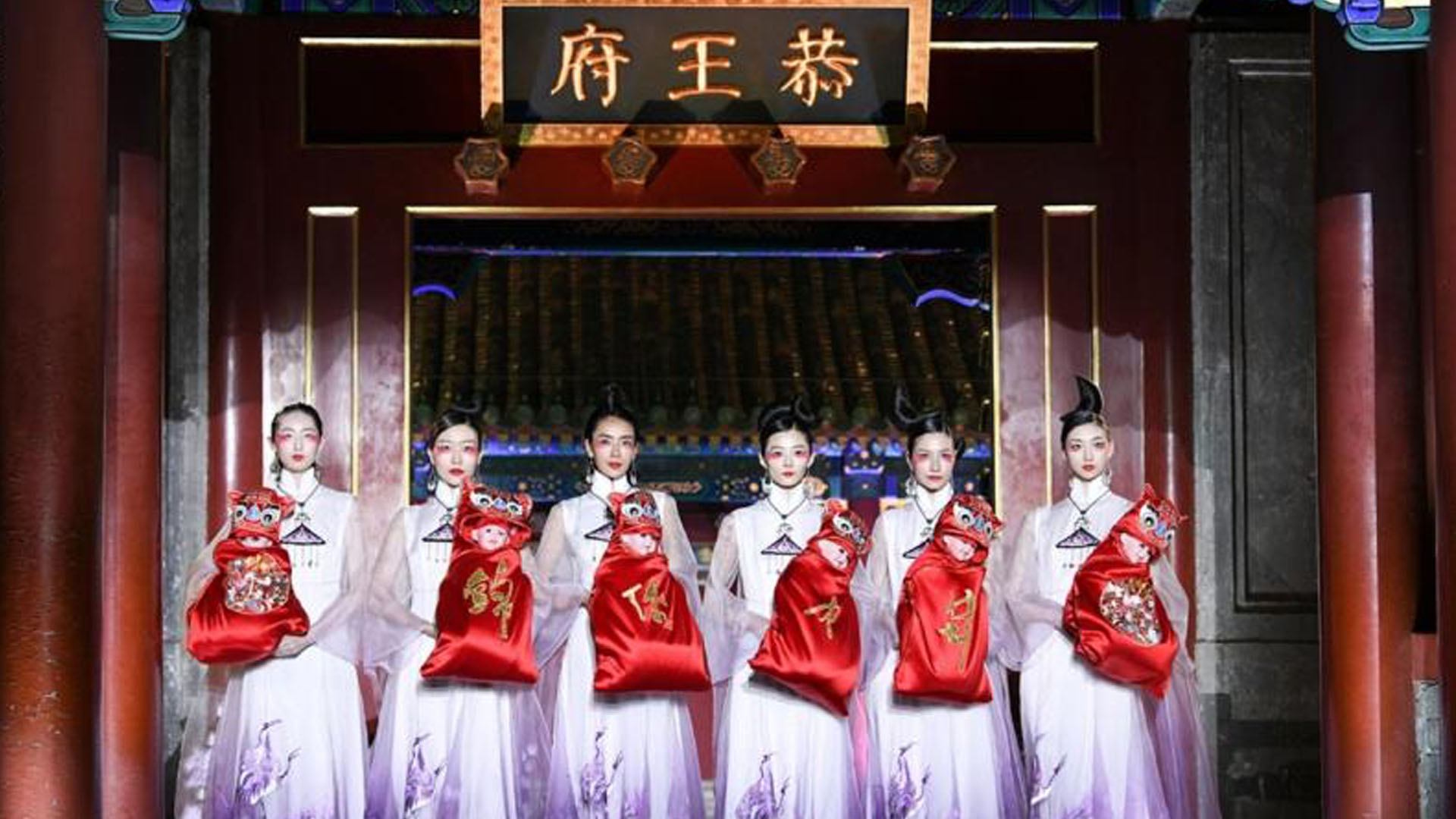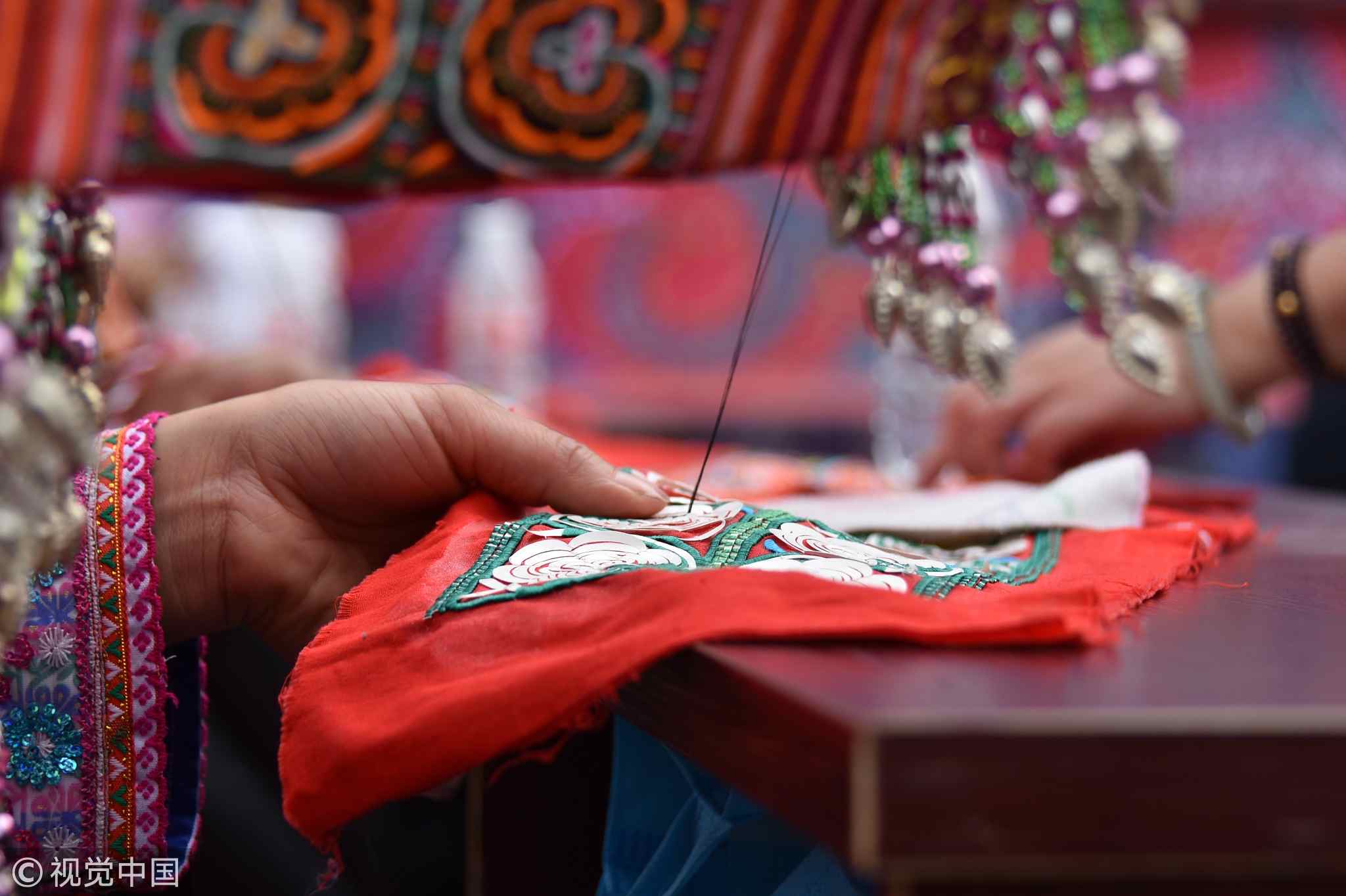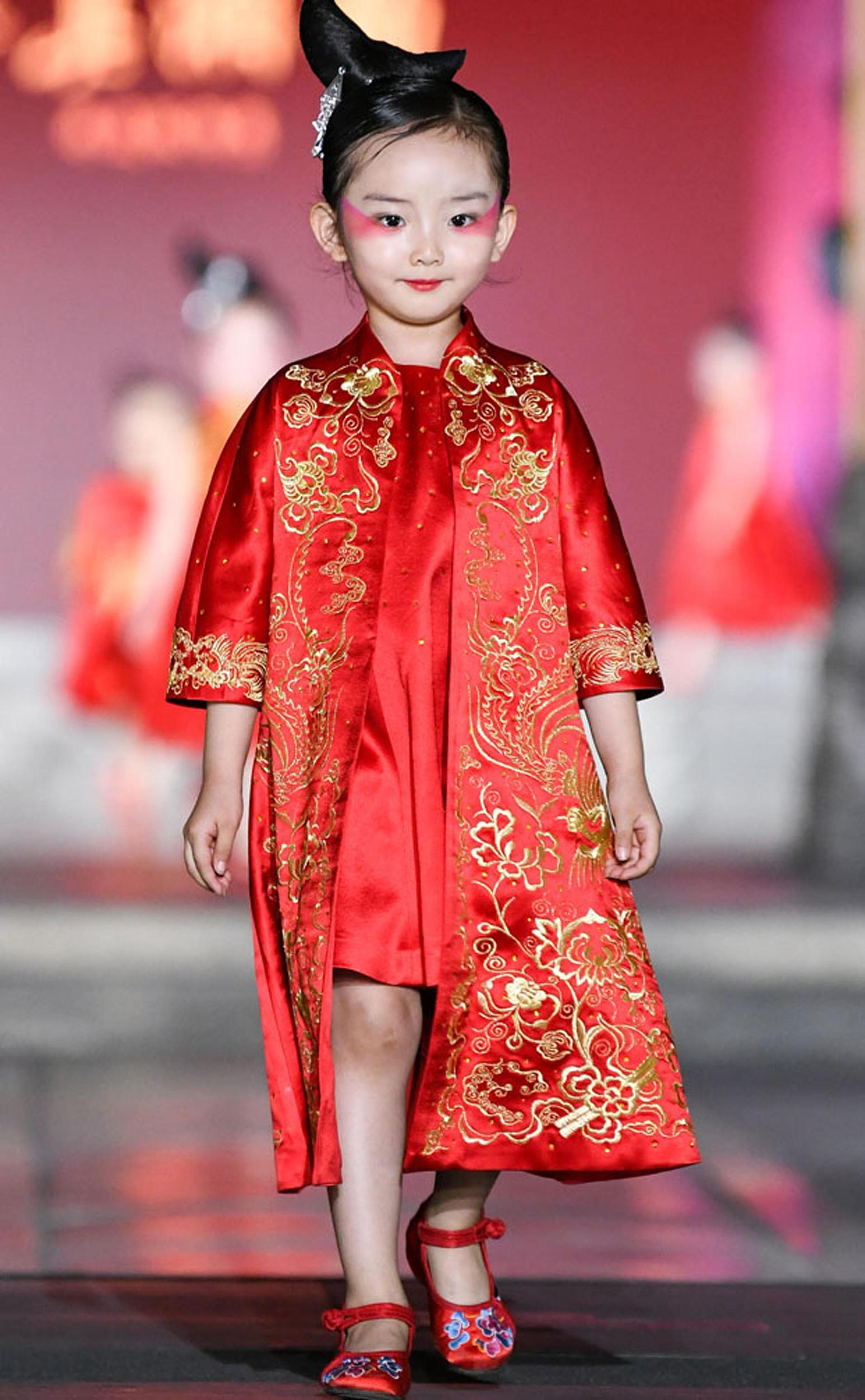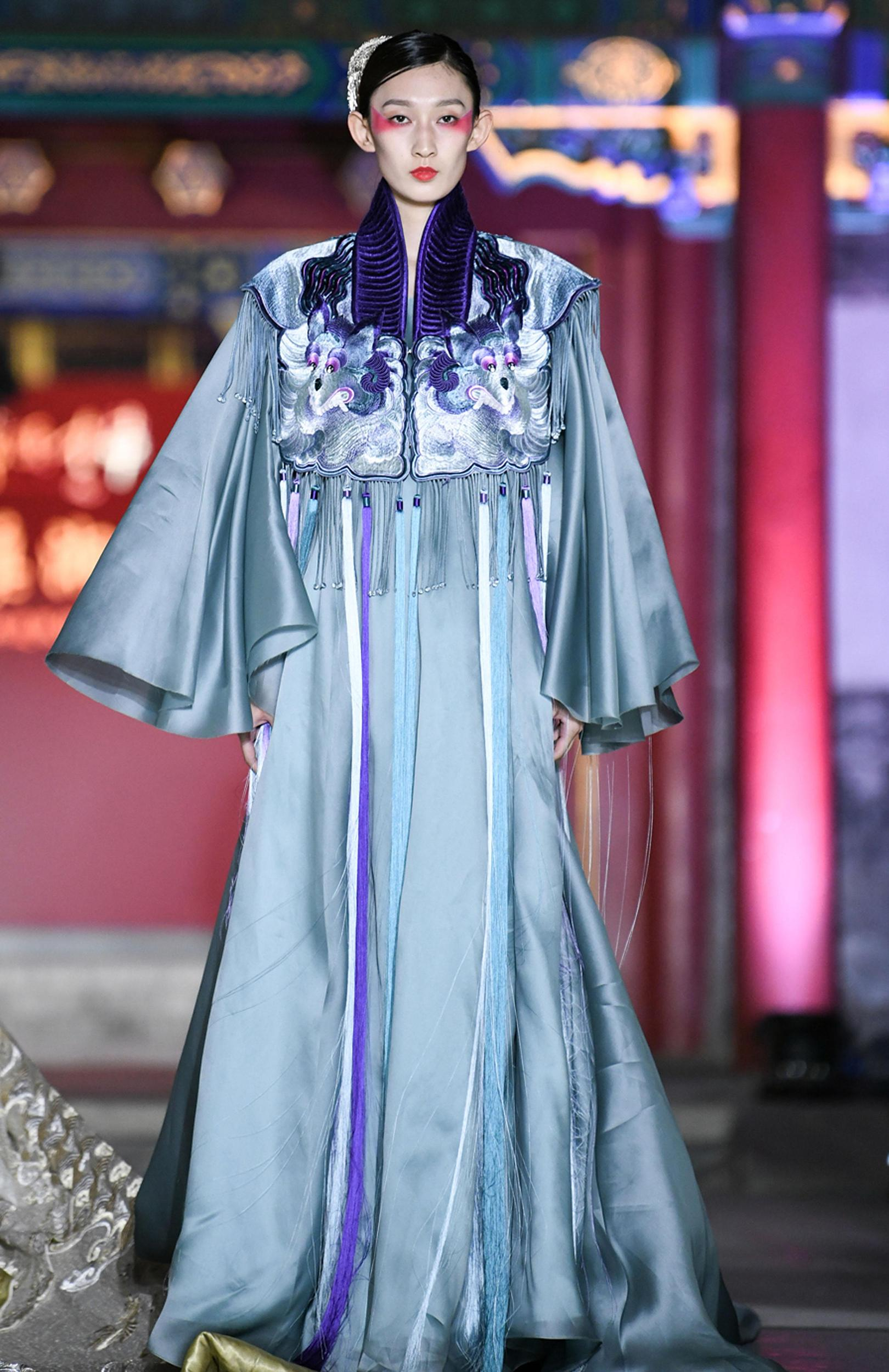
Culture
19:35, 12-Jul-2018
Miao embroidery with a modern twist
Updated
18:42, 15-Jul-2018
By Yang Ran, Sun Qingzhao
04:34

Miao embroidery has a history dating back more than 2,000 years. The Miao are one of China's ethnic groups, and have long been famous for their craftsmanship.
Embroidery is an essential part of Miao culture and a treasure of Chinese traditional costume culture. Wang Xiaolin, a designer, is dedicated to keeping the intricate technique alive.

Miao embroidery /VCG Photo
Miao embroidery /VCG Photo
A combination of Chinese intangible cultural heritage and modern fashion
Miao embroidery, originating from the remote mountains of southwest China, is on display at a costume show in Beijing to showcase the beauty of traditional Chinese culture.
Included in China's first official list of state-level intangible cultural heritage items, it is part of the Miao people's folk heritage and considered to be one of the finest examples of embroidery art.
This unique form of haute couture has recently been brought into the limelight.
"The show surprised me a lot. I have been studying Chinese minority costume culture for thirty years. Designers have a good taste of the cultural elements of the Chinese minority group. And they inject modern design into this ancient art form," Qi Chunying from the Minzu University of China says.

VCG Photo
VCG Photo
Wang is the chief designer of the show. She has been engaged in the design and promotion of minority group clothing for more than 20 years.
A few years ago, during a tour in Hunan Province, she was fascinated by the delicate Miao embroidery and had the idea of applying the technique to her own designs.
She led her team to the mountainous region in Hunan many times to collect Miao embroidery.
"At that time when I saw the embroidery work, I was very touched. Whenever I ride on a rugged mountain road, I always have a sense of responsibility. I think we should take Miao embroiderers out of the mountains. There are many skillful women in the mountains. Their skills will improve quickly as long as they are being trained. They are talented but there is no place to showcase their talent. It is also my duty to bring them out of there and help them become rich," Wang says.
Ma Guiying, an embroider, is one of these talents. "I have been living in this small mountain village since I was little. When I was very young, I learned some embroidery skills from my mother, and we did some embroidery work to subsidize my family."
In March 2016, under the support of the Ministry of Culture and Tourism, Wang's company established a workstation in the Xiangxi region and sent technicians to set up training classes to improve the skills of the embroiderers.
So far, more than 50 training courses have been organized, and more than 6,000 embroiderers have taken them.
Their works include many examples of classical Miao formal costumes, accessories and jewelry.
Many female embroiderers have also helped lift their families out of poverty.
In addition to training embroiderers, Wang has set up a research institute in Beijing.

VCG Photo
VCG Photo
She has brought embroiderers who have never been out of the mountains to the Chinese capital to broaden their horizons and learn new skills.
22-year-old Long Haimin just graduated from university.
She decided to continue her family's legacy, using her grandma and mother's embroidery skills to help promote Miao embroidery to the outside world.
"Miao embroidery must be passed on. As it is all handmade, if no one learns how to make it, the skill may be lost. It is also a promotion of the traditional crafts of our Chinese nation. If I have children in the future, I will also teach them the skill," Long says.
Back on the stage, many Miao embroiderers are happy to see their work on display at a modern fashion show.
"I never thought that our works could be shown on such a big stage. I am very excited and happy. We want to teach what we have learned to other women in my neighborhood," Ma Guiying says.
Wang says she will continue to promote Miao embroidery, bringing the beauty of traditional Chinese culture to the world fashion industry.

SITEMAP
Copyright © 2018 CGTN. Beijing ICP prepared NO.16065310-3
Copyright © 2018 CGTN. Beijing ICP prepared NO.16065310-3